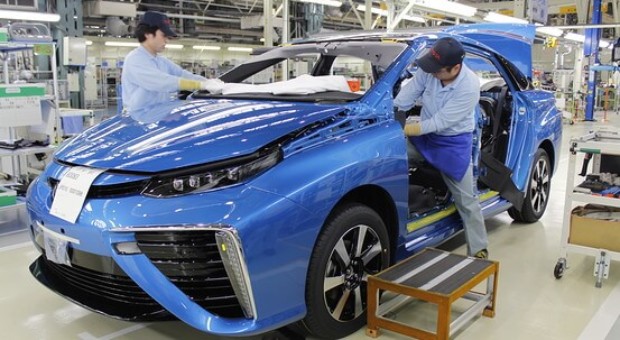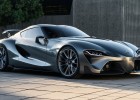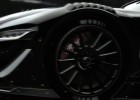
How a Future Car is Made: Behind the Scenes of Toyota ‘Mirai’ Production Line
In November 2014, Toyota Motor Corporation ushered in the future with the launch of the Toyota “Mirai” fuel cell sedan, followed by the Japan start of sales one month later. Today, Toyota held a production ceremony to mark the milestone of a new age of vehicles at its Motomachi Plant in Toyota City, Japan.
Production first started at the Motomachi Plant in 1959, and over its 56 year history, the manufacturing facility played a central role in realizing the dream of Toyota founder Kiichiro Toyoda: to foster an automotive industry in Japan and benefit society at large.
The plant started life as Japan’s first dedicated passenger car production facility. It has been home to some of Toyota’s most notable models, including the “Publica”, “Corona”, “Cresta”, “Soarer”, “Supra”, “RAV4”, and the Lexus “LFA” supercar.
The assembly line for the Toyota Mirai is divided into three main sections: trim, chassis/fuel cell assembly, and final assembly. In each section, there are sub-assembly areas for parts installation. This video shows an overview of the production line as well as the parts selection process located close to the assembly line.
The former “LFA Works” – where highly skilled craftspeople hand-built each of the 500 series limited Lexus supercars to some of the highest standards in the industry – has now become the home of the Mirai, just over two years since the last LFA exited the factory.
Before each Toyota Mirai body is brought to the former LFA Works assembly line, it is painted at the mass production line at Motomachi Plant. The vehicle doors are then removed to enable more efficient interior work for Toyota’s highly skilled craftspeople, as well as preventing doors from being damaged. This video also showcases: wire harness, dash silencer, brake fluid tank, rear combination lamp, instrument panel, main battery, roof lining, and rear bumper installation.
This small but dedicated facility is now charged with producing the hydrogen-powered sedan with the same care and attention to detail, with an estimated three units coming off the production line every day.
The Toyota Mirai fuel cell sedan features a CFRP Stack Frame which is produced at the assembly area of Toyota’s Motomachi Plant, formerly the LFA Works. Following the installation of the fuel cell stack, the boost converter, hydrogen tank and tubes are fitted to the vehicle. This video also shows the hydrogen leak test which is performed using helium. Next, the vehicle’s fuel cell stack and hydrogen tank are installed at the same time, followed by preparation of the electric motor and marriage of the air compressor to the fuel cell stack. Before the chassis assembly is complete, the drive shaft, front axle, inverter, water heating unit, high voltage cable, front suspension, motor, rear axle, front bumper and wheels are installed.
For the first time, go behind the scenes to see how the future1 is made. A description of the manufacturing process can be found at the bottom of this page.
The final processes before the Toyota Mirai fuel cell sedan rolls off the assembly line are the installation and assembly of the external power supply system, vehicle interior, engine bay, windshield, and rear windows. The glue used to affix the windows to the frame is 8 mm high and 12 mm wide, applied by a highly skilled craftsperson at a consistent rate. This video also features the final interior trim installations, including: seats, doors, steering wheel and inverter cover. An ignition check is then performed on the vehicle before it is send for final inspection.
This year, Toyota plans to make 700 Mirai cars. That will be boosted to 2,000 next year and 3,000 in 2017, according to the company.
Detailed quality control and inspection is performed on the Toyota Mirai before it leaves the Motomachi Plant, on its way to customers. Toyota specialists use both visual and tactile inspection to ensure the vehicle is of the highest quality and without any defect before leaving the factory.
Source: Toyota




















